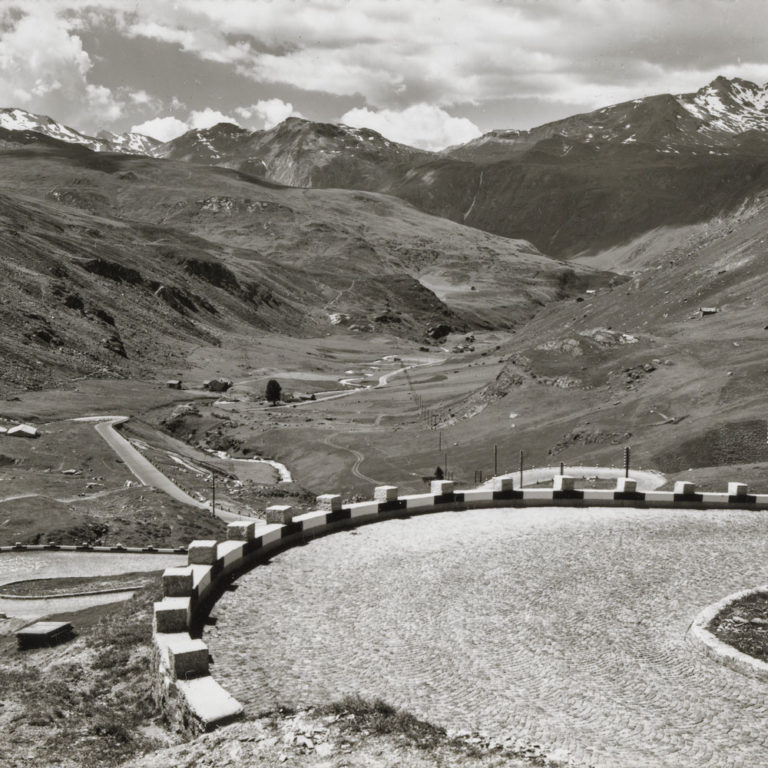
Julier Pass Road, Photography by Otto Futter, Postcard, around 1940.
DOCTORAL STUDENT
ADVISOR
CO-ADVISORS
Dr. Hans-Ulrich Schiedt, Universität Bern
Prof. Dr. David Gugerli, D-GESS ETH Zürich
PROJECT TIMEFRAME
Completion: 2023
PROJECT PARTNER
The Mountain on the Road. The Interrelation of Road and Landscape during the Modernization of the Swiss Pass Roads in the 1930s.
Central Swiss pass crossings were adapted for motorized traffic 90 years ago. Motorization was not an absolutely new phenomenon at the time. However, in the 1930s, it elevated the design of its infrastructure politically and economically to a cross-cantonal, national agenda matter – focusing on the alpine roads and aimed at an international automobile tourism. The decade was marked by the economic crisis of the late 1920s and political developments that culminated in the Second World War in 1939. Accordingly, the shaping of the alpine roads consisted of a complex interweaving of technical and design developments as well as cultural and political dynamics.
At that time, Switzerland’s alpine travel destinations were considered a historically legitimized location factor, underpinned by the existing building fabric of the so-called engineered roads from the 19th century. In contrast, the modernization of the roads for motorized traffic was then a future-oriented focal point.
The dissertation project is based on the thesis that the alpine landscape offered a central reference and had a constitutive effect on three levels: in the political negotiation, the design process, and the mediating reproduction of the roadscape of the mountain passes.
Picture: Otto Furter, “Julierpassstrasse zwischen Bivio und der Passhöhe”, around 1940
Source and Copyright: Verlag Otto Furter, Davos
The Julierpass was upgraded as a road for motorized traffic during the 1930s.
I. Political Landscape
The first part of the thesis asks in which economic and cultural-political contexts the design of the alpine roadscape was discursively embedded. Based on this, various individual and collective actors are identified, which consist of representatives of specific milieus – those of the road construction industry, the representatives of the automobile community, and the tourism sector. Additionally, a central component of the critical historiographical analysis is to identify transnational impulses. An essential aspect of the transnational references in the neighbouring alpine states is the synchronicity in the discourse relating symbols of national identity to the modernization of the alpine roads.
II. The Mountain on the Road
This second part explores how different aspects of the mountain landscape shaped the design negotiations of the construction of alpine roads. One development in the 1930s is explicitly examined: tunnel projects as conducive competition for the Alpine passes. Various project proposals for tunneling selected alpine passages became the focus of public interest from the beginning of the 1930s. As veritable “anti-pass roads,” they thus subversively catalyzed negotiations about the advantages of roads that led over the mountains. This, in turn, stimulated the debate about which references to the alpine landscape were important in the newly imposed design norms established explicitly for constructing alpine roads.
III. The Road on the Mountain
The third part of the research work examines the medial representation of the alpine roadscape. The mediation strategies were aimed at influencing the subjective sensual experience and thus also had an educational claim. In this section, the exhibition in the pavilion of the road traffic associations at the national exhibition of 1939 in Zurich is analyzed as a central case study. As a concise milestone in the examined period, the exhibition integrated the discussed topics in its presentation and curation of the mountain roads.

